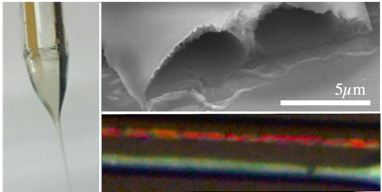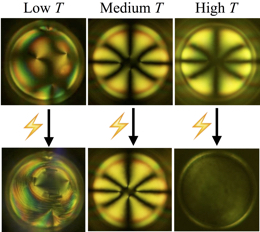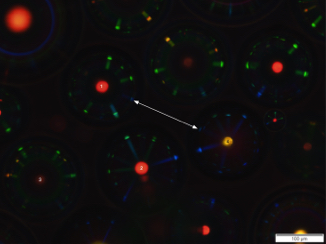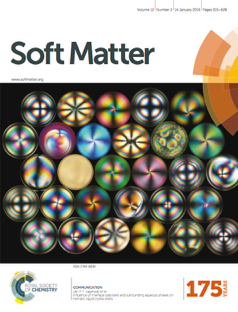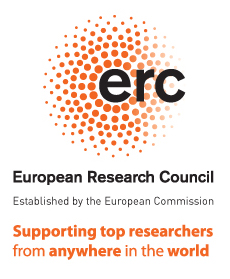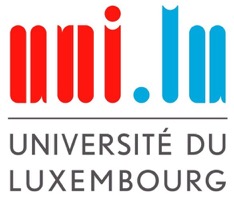publications
New paper on polymer-stablized liquid crystal shells in Advanced Materials
30/09/16 14:11
Congratulations to JungHyun and Benjamin for their new Adv. Mater. paper "Taming Liquid Crystal Self-Assembly: The Multifaceted Response of Nematic and Smectic Shells to Polymerization" on polymer-stabilization of nematic and smectic liquid crystal shells, and the sometimes unexpected consequences for the liquid crystal self-assembly. By polymerizing a small fraction of the reactive mesogen RM257 in shells of 8CB or its homologues, certain defect configurations can be locked in place, the exact result depending sensitively on the mixture composition and the temperature at which polymerization is carried out. Surprisingly, when polymerizing close to a phase boundary, a transition into the adjacent phase can be induced. The new phase can be more or less ordered, depending on the starting situation. The lifetime of the shells is dramatically enhanced, as is the temperature stability. By tuning the conditions, the self-assembled structure can be made fully permanent, being visible even upon heating to the isotropic phase of the non-polymerized component, or it can be retained in a latent state, allowing macroscopic loss of order on heating to the isotropic phase yet with a memory of the chosen defect configuration when cooling down. Apart from proposing explanations for the various observations we discuss possibilities to apply the polymer-stabilized shells, for instance in advanced materials generation or in sensing.
Here you can find the full paper (don't forget to check out the rich supporting information, including many spectactular movies), and here is a layman's abstract for the paper.
Here you can find the full paper (don't forget to check out the rich supporting information, including many spectactular movies), and here is a layman's abstract for the paper.
New paper on gas sensing with liquid crystal core microfibers
06/08/16 23:20
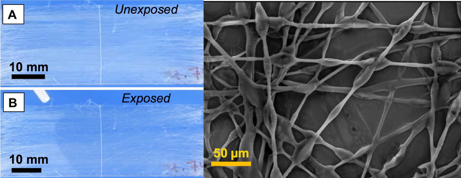
Yong's cholesteric microshells study published in Scientific Reports
30/05/16 10:30
Congrats to Yong on the publication of his cholesteric microshells study in the journal Scientific Reports (Nature Publishing Group)! Together with JungHyun he succeeded in preparing shells from different cholesteric liquid crystal mixtures, giving selective reflection in different color ranges. He has developed a new method to rapidly remove defects by annealing through osmosis, and then he polymerizes a fraction of the mixture that is sufficient to make the shells robust under considerable mechanical deformation. With the help of our collaborators Romano Rupp (University of Vienna) and Irena Drevensek-Olenik (University of Ljubljana) we analyze the complex optics of the photonic cross communication between the shells, finding that the communication is active even between shells with different reflection colors, opening up new communication channels (picture). Finally, our collaborator at the Interdisciplinary Center for Security and Trust (SnT) at the University of Luxembourg, Dr. Gabriele Lenzini, provides a thorough and critical discussion on how the patterns generated by the shells may be used in secure authentication. The paper is Open Access, so please download and read it at http://www.nature.com/articles/srep26840 (and make sure to check the nice movies in the Supporting Information!).
JungHyun's article makes the cover page on Soft Matter
23/12/15 13:44
Just in time for Christmas, JungHyun's beautiful collection of liquid crystal shells got to decorate the cover of issue 2 of volume 12 of Soft Matter. Her article "Influence of interface stabilisers and surrounding aqueous phases on nematic liquid crystal shells", written together with Kevin and Jan, appears on page 367 of this issue. Congratulations on your second journal cover, JungHyun!
Paper on the complex influence of the surrounding phases on liquid crystal shells accepted
26/10/15 21:24
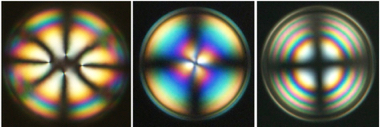
Paper on dual-core liquid crystal electrospinning
05/08/15 08:11
